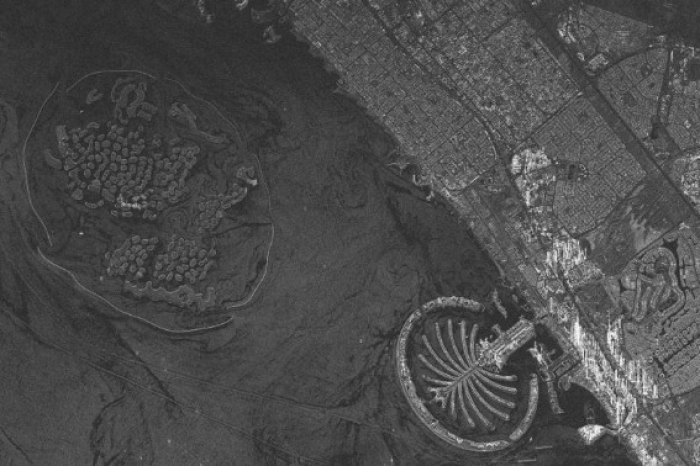Aerospace & Defense
KAIST discloses Earth images from Next-Gen Small Sat 2
On board during Nuri's 3rd launch in May, the homegrown satellite’s equipment is functioning normally, including SAR
By Sep 05, 2023 (Gmt+09:00)
1
Min read
Most Read
LG Chem to sell water filter business to Glenwood PE for $692 million


KT&G eyes overseas M&A after rejecting activist fund's offer


Kyobo Life poised to buy Japan’s SBI Group-owned savings bank


StockX in merger talks with Naver’s online reseller Kream


Meritz backs half of ex-manager’s $210 mn hedge fund



The main payload satellite Next-Generation Small Satellite 2" of the Nuri, launched on May 25, has been confirmed to be operating perfectly, as announced on Tuesday.
The Korea Advanced Institute of Science and Technology (KAIST) Satellite Technology Research Lab said today that it has successfully completed the initial operation of the satellite over the course of three months.
The satellite captured images across the world using its main payload synthetic aperture radar (SAR). It captured clear images of various locations including San Francisco, Las Vegas and Niagara Falls in the US, South Korea's Mt. Seorak, Saemangeum tidal flat, Mt. Halla, Yanggu, Busan, Mokpo and others. It also captured detailed images of the artificial island Palm Jumeirah in Dubai, the UAE, and the Antarctic King Sejong Station.
SAR technology sends out radio waves and creates images based on the reflected signals, enabling all-weather observations unaffected by day or night, weather, or clouds. It is commonly used in fighter aircraft radar and surveillance satellites.
KAIST confirmed that in addition to the main payload SAR, all four secondary payload units developed by domestic research institutions are running normally. These include a GPS/Galileo hybrid navigation receiver, a thermal control device using phase-change material, an X-band gallium nitride (GaN) power amplifier, and a solar cell array module.
The research lab plans to deploy the next-generation small satellite 2 for its intended mission after an additional eight months of verification. This mission includes detecting changes in Arctic sea ice, monitoring forest conditions, and detecting marine environmental pollution.
"Using the domestically developed space synthetic aperture radar (SAR) to capture images of the Earth for the first time holds significant meaning," said Jae-hung Han, Director of the KAIST Satellite Technology Research Lab and Professor at the Department of Aerospace Engineering. "I hope that the acquired technological assets and operational experience will contribute to the advancement of SAR technology."
Write to Hae-Sung Lee at ihs@hankyung.com
More to Read
-
 Aerospace & DefenseS.Korea succeeds in 3rd launch of homegrown rocket Nuri
Aerospace & DefenseS.Korea succeeds in 3rd launch of homegrown rocket NuriMay 25, 2023 (Gmt+09:00)
3 Min read -
 Aerospace & DefenseHanwha Systems, KAI sign contracts to develop SAR satellites
Aerospace & DefenseHanwha Systems, KAI sign contracts to develop SAR satellitesMay 18, 2023 (Gmt+09:00)
2 Min read -
 Aerospace & DefenseS.Korea's lunar orbiter Danuri captures back side of the moon
Aerospace & DefenseS.Korea's lunar orbiter Danuri captures back side of the moonApr 12, 2023 (Gmt+09:00)
1 Min read -
 Aerospace & DefenseUK satellite firm OneWeb to provide services in Korea
Aerospace & DefenseUK satellite firm OneWeb to provide services in KoreaMay 30, 2022 (Gmt+09:00)
long read -
 Aerospace & DefenseDefense giants eager to bolster satellite business
Aerospace & DefenseDefense giants eager to bolster satellite businessFeb 11, 2022 (Gmt+09:00)
4 Min read -
 Aerospace & DefenseHanwha, KAIST to co-launch space research center
Aerospace & DefenseHanwha, KAIST to co-launch space research centerMay 17, 2021 (Gmt+09:00)
1 Min read
Comment 0
LOG IN


